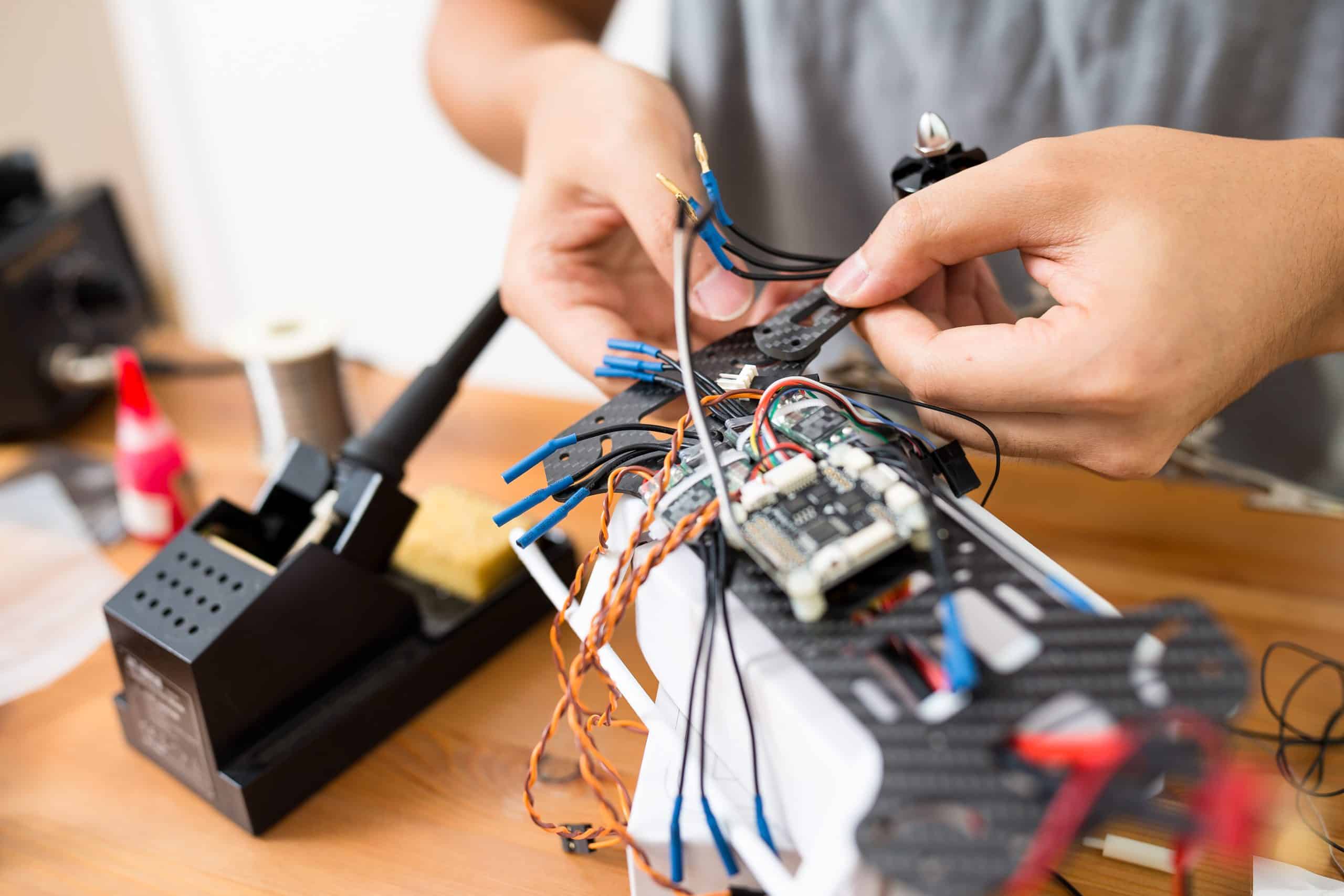In the new world of agricultural technology, drones have emerged as a game-changing innovation. These aerial vehicles are revolutionizing the way farmers monitor their crops and manage their fields. In particular, they are transforming pest control methods, making them more effective and efficient. This article will delve into the multifaceted role of drones in enhancing agricultural pest control.
Drones: A New Approach to Crop Monitoring
Traditionally, farmers would have to walk around their fields to check for pests. This is not only time-consuming but can also be ineffective as pests can easily go unnoticed until it’s too late. Enter drones.
Additional reading : How Can AI Optimize Renewable Energy Distribution in Smart Grids?
Drones, or Unmanned Aerial Vehicles (UAVs), have the capacity to fly over large areas and take high-resolution images of fields, enabling farmers to identify pest hotspots. This process is known as crop monitoring. The drone’s camera can capture images that show slight changes in the plant’s color. These changes can indicate the presence of pests even before the human eye can detect them.
Furthermore, drones are not limited to just visual inspection. Some drones come equipped with multispectral sensors. These sensors can detect light in both the visible and the near-infrared spectrum, which allows them to identify unhealthy plants that may be under pest attack.
Also to read : What Are the Challenges and Solutions in Recycling Electronic Waste?
By providing real-time, accurate data on pest infestation, drones allow farmers to take quick action, thereby minimizing damage to crops and reducing the cost of pest management.
Drone Spraying: The Precision Method to Pest Control
Another significant application of drones in agriculture is in the spraying of pesticides. Traditional methods of pesticide application, such as backpack sprayers or tractor-mounted sprayers, are labor-intensive and can also lead to over-spraying, which is harmful to the environment.
Drone spraying technology, on the other hand, offers a more precise way to control pests. Drones can fly at a low altitude and spray pesticides directly onto the affected areas. This targeted application not only minimizes pesticide use but also ensures that every plant receives the necessary treatment.
Besides precision, drone spraying offers the advantage of timeliness. Pests can multiply rapidly, so quick action is often vital to prevent an infestation. Drones can be deployed swiftly and operate even in difficult weather conditions when traditional spraying methods may not be feasible.
Data-driven Pest Management: The Future of Farming
Drones are not just tools for monitoring and spraying; they are also powerful data-gathering devices. They can collect a wide range of data, including temperature, humidity, and plant health, which can be analyzed to make informed pest management decisions.
This data-driven approach to pest control is a part of what is known as precision farming. Precision farming is a farming management concept that uses data and technology to ensure that crops and soil receive exactly what they need for optimum health and productivity. It is a step towards more sustainable and efficient farming practices.
With the data collected by drones, farmers can monitor pest populations, identify patterns, and predict future outbreaks. This predictive capability can enable preventive pest management, where farmers can take measures to ward off pests even before an infestation begins.
Drones and Integrated Pest Management
Integrated Pest Management (IPM) is an ecological approach to pest control that combines different pest control methods to achieve long-term pest management solutions. It aims to minimize the use of pesticides and reduce the impact on the environment.
Drones can play a key role in IPM by facilitating the use of biological control methods. For instance, drones can be used to release beneficial insects that prey on pests.
Moreover, drones can also help in the application of pheromones, substances used to disrupt pest mating. By dispensing pheromones in pest-infested areas, drones can effectively control pest populations without harming non-target species or the environment.
Conclusion
Drones are proving to be powerful tools in the realm of agriculture. They are transforming traditional farming methods, making them more efficient, sustainable, and effective. Whether it is monitoring, spraying, data collection, or integrated pest management, drones are enhancing every aspect of agricultural pest control. However, as with any technology, there are challenges to overcome, including regulatory hurdles and technical limitations. But with ongoing advancements and increasing adoption by farmers, drones are set to become an integral part of modern farming.
Despite their numerous benefits, the use of drones in agriculture is still in its early stages. As technology continues to evolve, so will the potential applications for drones in this field. However, one thing is clear: drones have started a revolution in agriculture, and there’s no turning back.
The Role of Different Types of Drones in Precision Agriculture
The type of drone used plays a crucial role in achieving efficient and effective pest management. In precision agriculture, both fixed wing and multi rotor drones come into play.
Fixed wing drones are typically used for large-scale crop monitoring. They can cover large distances and stay aloft for longer periods, capturing high-resolution images that provide valuable information about crop health. This allows for early detection of pest infestation, enabling swift action to prevent extensive damage.
On the other hand, multi rotor drones are best suited for tasks that require precision and control, such as drone spraying. Equipped with advanced technology, these drones can accurately target pest-infested areas and deliver the necessary treatment. The precision they offer minimizes pesticide application, reducing the environmental impact and cost linked to pest control.
In addition, some drones are equipped with advanced features such as thermal cameras and LiDAR sensors. Thermal cameras can detect heat emitted by crops, helping to identify plant stress which could be an indication of pest attack. LiDAR sensors, on the other hand, can create 3D maps of the farming area, providing even more detailed information on crop health and pest presence.
By selecting the right type of drone for specific tasks, farmers can maximize the benefits of drone technology in pest control, making farming practices more sustainable and productive.
Overcoming Challenges to Improve the Use of Agricultural Drones in Pest Control
While drones are transforming pest control in agriculture, this technology also presents several challenges that need to be addressed.
Regulatory hurdles can pose a significant challenge. In many regions, the use of drones is subject to strict regulations, particularly when it comes to pesticide application. Farmers and agricultural businesses have to comply with these regulations, which can limit the full potential of drone usage.
Technical limitations are another challenge. While drone technology has advanced significantly, there are still restrictions in terms of battery life, payload capacity, and operational range. For example, the limited battery life can restrict the amount of time a drone can stay aloft, reducing its effectiveness in large-scale crop monitoring.
Despite these challenges, ongoing research and development in drone technology are paving the way for improvements. More efficient batteries, larger payload capacities, and extended operational ranges are all areas of focus. Additionally, regulatory bodies are also working towards creating a conducive environment for the use of drones in agriculture.
Conclusion
In the evolving world of precision agriculture, drones are making a significant impact. From enhancing crop monitoring to improving pest control, drones are redefining traditional farming practices. They offer a range of benefits, including reduced cost, increased efficiency, and minimized environmental impact. The use of different drones, like fixed wing and multi rotor, offers unique advantages in pest management.
Challenges such as regulatory hurdles and technical limitations exist, but with ongoing advancements in drone technology, these hurdles are gradually being overcome. As the adoption of drones in agriculture continues to rise, their role in pest control is set to become even more indispensable.
While it is still early days for the use of drones in agriculture, the revolution they have started is undeniable. As technology continues to evolve, so will the potential applications of drones in agriculture. The future of farming is here, and drones are leading the charge.






